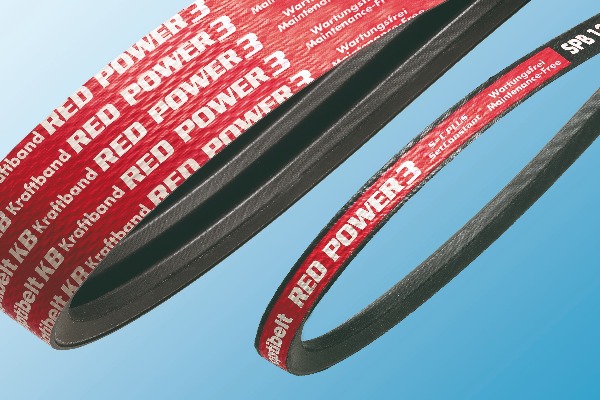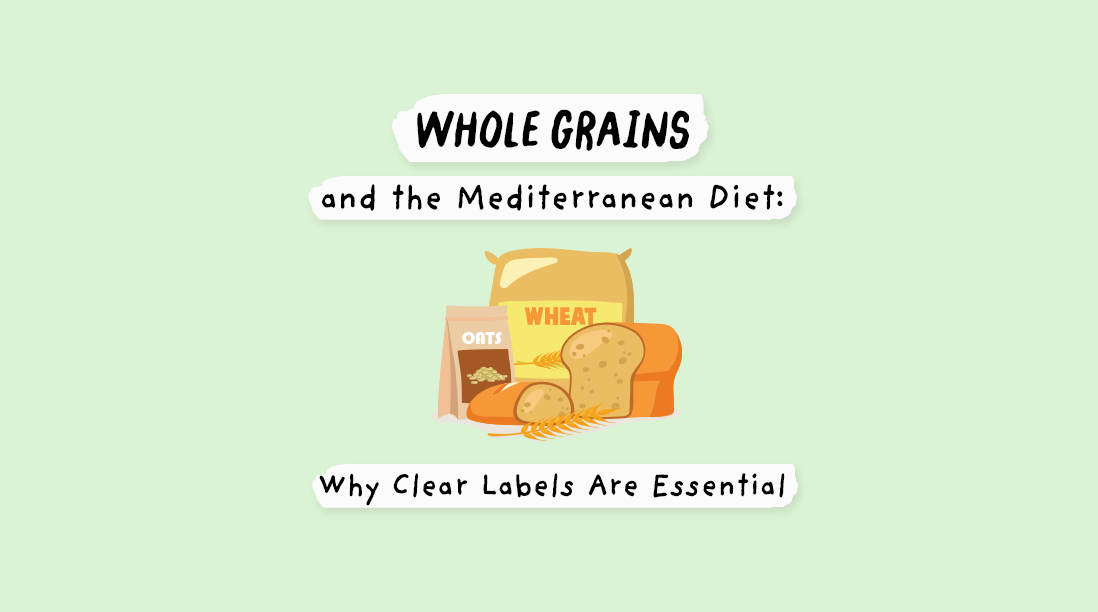40 what does the colours mean on food labels
The psychology of color in food packaging The most important colors for food packaging designers: Red universally used in food marketing strong eye-catcher triggers emotional responses and appetite we associate red with freshness Yellow usually indicates cheerfulness and optimism the brain releases serotonin at the sight of yellow Green synonymous with health and wellbeing What Food Labels Mean—and Don't - Consumer Reports Processed foods labeled "organic" also cannot contain artificial ingredients unless they go through a rigorous review process, and have no artificial preservatives, colors, or flavors. Natural ...
How To Read Food and Beverage Labels - National Institute on Aging To help avoid confusion, the FDA sets specific rules for what food manufacturers can call "light," "low," "reduced," "free," and other terms. This type of labeling may have little to do with how nutritious the food is. Here are some examples and what they mean: Light. Light products are processed to reduce either calories or fat.

What does the colours mean on food labels
Time to Use These Yummy Colors for Food Logo Design There are two colors that food brands commonly use for their logos: red and yellow. Red was mentioned, but now it's yellow's time to shine. Yellow is an intense color, therefore it attracts intense emotions. Yellow is beneficial because it's attention-grabbing and conveys feelings of happiness. Looking at labels - British Nutrition Foundation Red does not mean you cannot eat the product, but means the food is high in fat, saturated fat, salt or sugar. ... Other information on food labels. ... Colours- not surprisingly, these are added to provide colour and make food appear attractive. Some food colourings come from natural sources such as curcumin from turmeric (E100), while others ... Health Claims on Food Labels - Consumer Reports Shop smart: Colors and flavors are just a small part of the story when it comes to the nutritional profile of foods. "It's important to evaluate the whole food and not just one or two components...
What does the colours mean on food labels. Understanding food labels | nidirect Colour coding tells you at a glance if the food has high, medium or low amounts of fat, saturated fat, sugars and salt. red means the food or drink is high in this nutrient - try having these less... Understanding the USDA Organic Label Amidst nutrition facts, ingredient lists, and dietary claims on food packages, "organic" might appear as one more piece of information to decipher when shopping for products. Understanding what the organic label means can help shoppers make informed purchasing choices. Organic is a labeling term found on products that have been produced using cultural, biological, and mechanical practices ... What Do Those Weird Color Dots On Your Food Packaging Mean? There have been rumors about what these colored dots mean, over the years. Some people have said that black means the product is GMO, green means its organic, and so on. In actuality, there is not a color coded system for any of these details. Don't be alarmed, there are certain manufacturers that actually make sure these color dots are cut ... What Do Those Food-Label Terms Really Mean? The USDA allows meat and poultry products to be labeled "natural" if they are "minimally processed" and do not contain artificial colors or flavors, preservatives or other artificial ingredients. "Natural" does not mean the animals were not fed antibiotics or hormones, however, or guarantee anything about humane agricultural practices.
How to understand food labels - Eat For Health The Nutrition Information Panel on a food label offers the simplest and easiest way to choose foods with less saturated fat, salt (sodium), added sugars and kilojoules, and more fibre. It can also be used to decide how large one serve of a food group choice or discretionary food would be and whether it's worth the kilojoules. [Infographic] Colors that Influence Food Sales - Jenn David Design Black signifies elegant, sleek and high-end. For food packaging however, the color brown often takes the place of black as a more appetizing color which can still be portrayed with the same descriptors as black. Browns and earth tones are warm, appetizing, wholesome, natural. Understanding Food Labels - Nutrition: Science and Everyday Application The value printed on the Nutrition Facts panel is the percent DV, which tells you how much one serving of the food contributes towards meeting the daily requirement for that nutrient. The FDA uses the following definitions for interpreting the %DV on food labels:4. 5%DV or less means the food is low in a nutrient. How to decode a food label - BBC Future Some nations, like the UK, have a traffic light system for nutrition that expresses how healthy a processed food is in terms of fat, saturates, sugars and salt, using the colours red, amber and green.
36 Food Labels You Should Know | News Most foods labeled "natural," "all natural" or "100% natural" are not subject to specific government controls, with the exception of meat and poultry. For these, the USDA defines natural as: no artificial flavoring, color, ingredients, chemical preservatives or artificial or synthetic ingredients, not taking into account animal welfare. Understanding Dates on Food Labels - Eatright.org These are found primarily on perishable foods such as meat and dairy products. "Closed Dating" is a series of production numbers used by the manufacturer to indicate when a product was made. They primarily appear on shelf stable products such as cans and boxes of food. Except for infant formulas, product dates are not expiration dates. Understanding Food Labels | Extension | West Virginia University Calories are listed as the second item on the food label, just under serving size. Calories from fat are also shown on the Nutrition Facts. Calories from fat alert you to what many call "empty calories." Empty calories have no nutritional value and come from solid fats and added sugars. Use of the Term Natural on Food Labeling | FDA The FDA has considered the term "natural" to mean that nothing artificial or synthetic (including all color additives regardless of source) has been included in, or has been added to, a food that...
Understanding Food Quality Labels | Agricultural Marketing Service USDA's Agricultural Marketing Service (AMS) provides American agriculture with valuable tools and services, such as grading, certification, and verification, that help create marketing opportunities. Through these services we guarantee the quality of American food and add value to American products. View the factsheet to learn more about the ...
Food labels - NHS Some front-of-pack nutrition labels use red, amber and green colour coding. Colour-coded nutritional information tells you at a glance if the food has high, medium or low amounts of fat, saturated fat, sugars and salt: red means high amber means medium green means low In short, the more green on the label, the healthier the choice.
Check the label | Food Standards Agency sugar salt This is an image of the traffic light label found on some foods. The traffic light label is colour coded and shows that green is low in a particular nutrient, amber means medium and red...
Color Additives Questions and Answers for Consumers | FDA There are nine certified color additives approved by the FDA for use in food: FD&C Blue No. 1 Confections, beverages, cereals, frozen dairy desserts, popsicles, frostings & icings FD&C Blue No. 2...
What Are The Colored Circles on Food Packages? | Mental Floss The color blocks are usually pictured as circles on most bagged products and squares on boxed goods, with the most common being black, cyan, magenta, and yellow, since they're the basis of most...
What Those Colored Circles on Food Packages Actually Mean The colored circles on food packages can come in a variety of colors: pink, yellow, blue, black, orange, purple, or green, in varying shades of light and dark. Apparently, those colored shapes are...
Food and Color: What Does It All Mean? - TraceGains Color plays a significant role in how we choose our food. It's often the first element noticed in the appearance of a food product. Many studies suggest that visual taste perception begins in infancy and increases as we age. For example, if something is bright red, we might assume it will taste like cherry or cinnamon.
The inside story: How to read the label on your food In a 5g teaspoon of salt there are roughly 2g of sodium and 3g of chloride. (To get a rough idea of how much salt is in your food read the number of milligrams of sodium per serve. Multiply by 2.5 then divide by 1000.) The World Health Organisation recommends that we eat no more than a teaspoon or 5g of salt a day.
Food colours Food colours. Food colours are either produced naturally or derived synthetically. Like all food additives, colours must undergo a safety assessment by FSANZ before they can be used in food or drinks sold in Australia or New Zealand. This process sets a safety limit for food additives to try and ensure no one would eat an unsafe level, even if ...
What Does the USDA Label On Food Mean? - Public Goods The USDA Prime label means that the meat was produced from young cattle, and that the beef has plenty of marbling, which describes the white streaks of fat found on the meat. The USDA Choice label describes a more high-quality meat. This meat has less marbling than prime meat and is thought to be best for broiling, roasting and grilling.
What does the colors on food labels mean? - Quora Answer (1 of 2): In India at present two color codes are used in packaged foods as part of mandatory requirement . This is to help the consumers to identify the packed foods as vegetarian or nonvegetarain foods. Source: Food packages with symbols( shown in yellow color...
Health Claims on Food Labels - Consumer Reports Shop smart: Colors and flavors are just a small part of the story when it comes to the nutritional profile of foods. "It's important to evaluate the whole food and not just one or two components...
Looking at labels - British Nutrition Foundation Red does not mean you cannot eat the product, but means the food is high in fat, saturated fat, salt or sugar. ... Other information on food labels. ... Colours- not surprisingly, these are added to provide colour and make food appear attractive. Some food colourings come from natural sources such as curcumin from turmeric (E100), while others ...
Time to Use These Yummy Colors for Food Logo Design There are two colors that food brands commonly use for their logos: red and yellow. Red was mentioned, but now it's yellow's time to shine. Yellow is an intense color, therefore it attracts intense emotions. Yellow is beneficial because it's attention-grabbing and conveys feelings of happiness.













Post a Comment for "40 what does the colours mean on food labels"